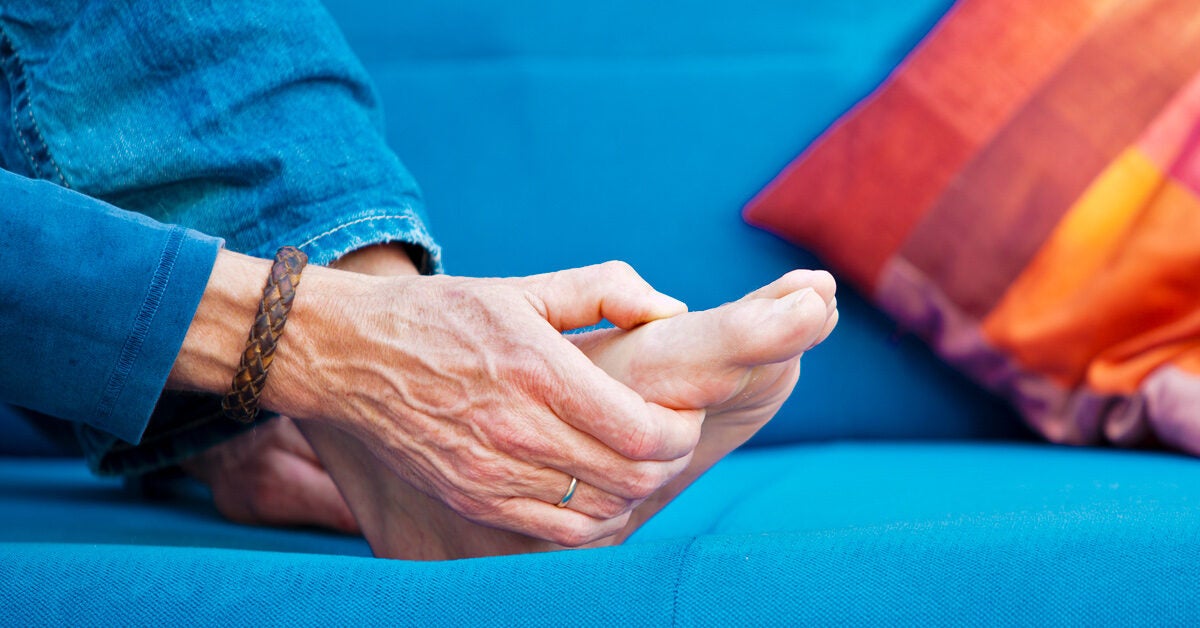Stucco Keratosis: Definition, Causes, Treatment - Healthline

Stucco keratosis is a type of benign skin lesion that most often develops on the feet and legs. These lesions tend to be more common as you get older.
The name of the condition is derived from the "stuck on" appearance of the lesions. The rough, sticky appearance of these lesions is similar to the textured look of stucco. Another name for this condition is keratosis alba.
Read on to learn more about what stucco keratosis is, what it looks like, and what the treatment options are for this condition.
Stucco keratosis is a type of bump on the skin, typically located on the top and sides of the feet, but not the soles.
The nodules can also form on your toes, ankles, and legs. They're less commonly found on the thighs and forearms.
Some of the key features that may help you identify stucco keratosis growths include the following characteristics:
- a raised or flat lesion about 1 to 10 millimeters (mm) in diameter
- usually white or gray, but can be yellow or light tan
- dry and scaly, appearing to be stuck to the skin
- more noticeable during winter when skin is drier
- doesn't fade with time
- doesn't cause pain or itching
- may slowly grow bigger
- looks different from a mole
Over time, you're likely to develop more lesions. Some people have dozens of these nodules, but they can even number in the hundreds.
Stucco keratosis is one of several variants of skin growth called seborrheic keratosis. These are the
There are differences in the appearance of seborrheic keratosis and stucco keratosis skin growths. For example, seborrheic keratosis lesions:
- are more likely to be dark brown, black, or a mixture of colors
- are smooth, waxy, or wartlike
- stand alone or in groups
- can be located on the scalp, face, shoulders, back, under the breasts, abdomen, or groin
Anyone can develop stucco keratosis, but it's more common as you grow older, particularly after age 40.
Men may be
Yes, stucco keratosis lesions are harmless.
They are benign. This means they're not cancerous, nor will they develop into cancer. They're not contagious, so you can't spread them to other parts of your body or to other people.
They're not likely to cause physical discomfort and it's not medically necessary to remove them.
On the other hand, the lesions can make it easy to overlook other skin problems, including cancerous lesions. So, it's important to have a dermatologist examine your skin regularly to make sure there's nothing else going on.
The cause of stucco keratosis is unknown. It's possible that it has something to do with sunlight, but since stucco keratoses don't usually develop on the face, that's uncertain.
There's no clear evidence on what you can do to prevent these lesions from forming.
Stucco keratosis lesions won't clear up on their own.
A dermatologist can make a diagnosis of this condition with a visual inspection.
If there's any doubt about what the lesion is, they may perform a biopsy. A biopsy is a procedure in which the doctor takes a small sample of skin. The sample is then sent to a lab for examination under a microscope. This can help determine if it's stucco keratosis or some other condition.
Because stucco keratosis lesions don't pose any danger to your health, treatment isn't necessary. But, if you're bothered by the appearance, there are some cosmetic treatment options that may help.
Keep in mind that these treatments are not a cure and won't prevent the formation of new lesions. The treatments may also result in some loss of pigmentation, which will usually be more obvious on skin with more pigment.
Topical preparations
While there are no FDA-approved topical treatments for seborrheic keratoses, you might be able to improve the appearance of lesions with prescription topical treatments. These lotions or ointments usually contain one or more of these ingredients:
Freezing
Cryotherapy, or cold therapy, is an effective method of removing skin lesions.
Your doctor will apply liquid nitrogen spray on each lesion to freeze it. It may sting when the liquid nitrogen is applied to your skin.
You might have some soreness over the next few days as blisters develop and eventually fall off.
Scraping
Your dermatologist can scrape the lesions off with a sharp razor. It generally doesn't cause any bleeding, but you'll need to apply a topical antibiotic during the healing process.
Due to the risk of infection, this isn't a treatment you should try on your own.
Surgery
Your doctor can perform minor surgery to remove the lesions. There's no need for general anesthesia or a hospital stay. After injecting a local anesthetic into the area where the lesions are, your doctor will use a curette or scalpel to remove the lesions.
The surgery isn't painful and there's no need for stitches. For the next few weeks, you'll need to change the bandages every day and apply antibiotic ointment to prevent infection. Any scabs that form will fall off by themselves, leaving minor scarring.
Stucco keratosis is a skin growth that usually appears on the tops of your feet and legs. The cause is not clear, but it's more likely to develop after age 40 and occurs more often in men than women.
The lesions are painless and benign, so there's no medical need for treatment. If you'd like treatment for cosmetic reasons, there are several options. But there's no cure and it's possible that more lesions will develop after treatment.
Even though stucco keratosis isn't dangerous, having many of them can mask other skin problems. That's why it's a good idea to have a dermatologist check your skin regularly.
Comments
Post a Comment